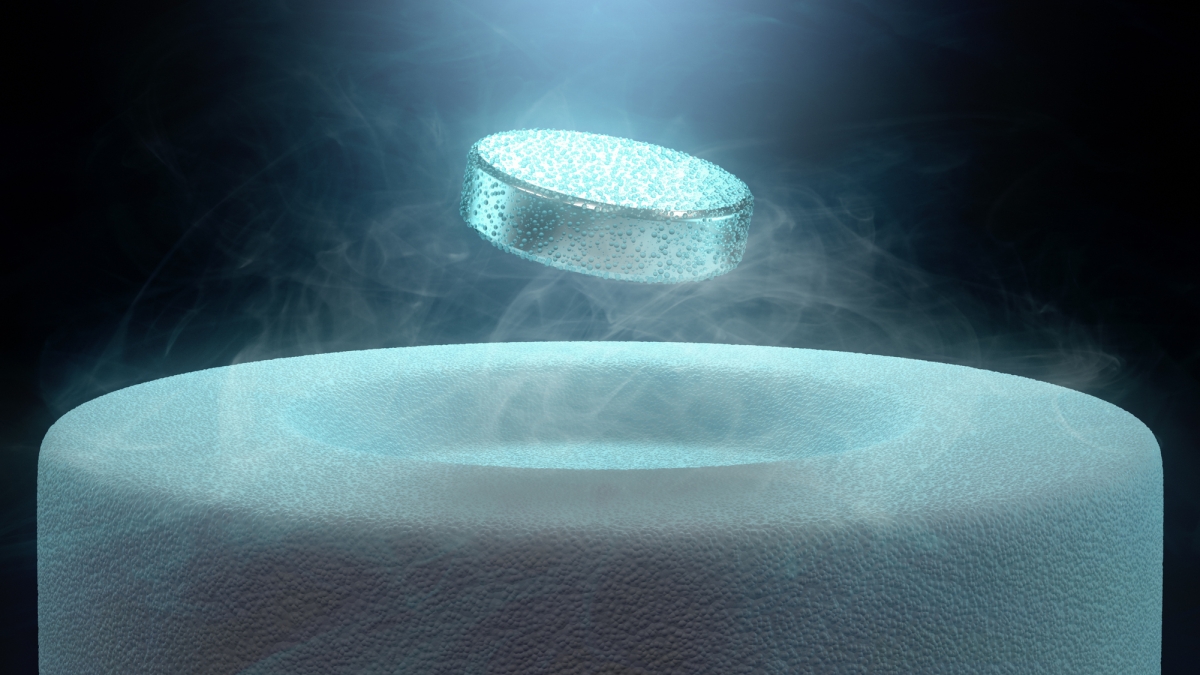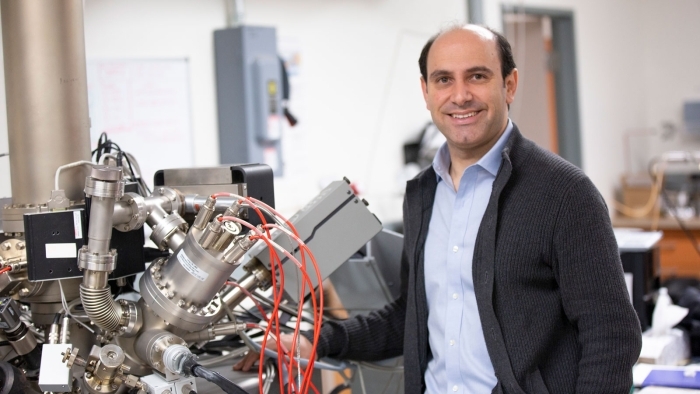ASU scientists investigate potential superconductor

Photo courtesy iStock/Getty Images
Superconductivity represents a groundbreaking phenomenon in physics: enabling the transmission of electricity without any loss of energy. However, this remarkable property has only been observed to occur when certain materials are cooled below a critical temperature.
Recently, there has been excitement in the physics and materials community about possible superconductors near room temperature, which would permit amazing technical applications with the potential to address global energy challenges, enhance computing speed, enable innovative memory-storage devices and create highly sensitive sensors, among a multitude of other possibilities.
In a new study, scientists from Arizona State University’s School of Molecular Sciences (SMS) and School for Engineering of Matter, Transport and Energy (SEMTE) examine the physical properties and fundamental thermodynamics of nitrogen doped lutetium hydride (LHN), which was recently reported to exhibit superconductivity at high pressures and room temperature. Understanding its properties may help predict materials that are superconducting at lower pressures.
This compound, LHN, has recently garnered attention for its ability to exhibit superconductivity under high-pressure conditions, specifically near 1 gigapascal (GPa), equivalent to about one hundred thousand atmospheres.
The LHN in this study was prepared at different high-pressure and high-temperature conditions with careful control and analysis of its composition and structure. It was then analyzed for its structural, magnetic and thermodynamic properties. These studies confirmed that, although it is stable under the high-pressure conditions of synthesis, it is not stable under ambient conditions and rapidly decomposes when heated. This material did not exhibit superconductivity at any temperature.
Professors Alexandra Navrotsky and Seth Ariel Tongay are the senior authorsAdditional authors of this study include: Yifeng Han, SMS and MotU at ASU; Yunbo Ou, SEMTE at ASU; Hualei Sun, School of Science, Sun Yat-Sen University, Shenzhen 518107, R.P. China; Jan Kopaczek, SEMTE at ASU and the Department of Semiconductor Materials Engineering, Faculty of Fundamental Problems of Technology, Wroclaw University of Science and Technology, Wrocław 50-370, Poland; Gerson J. Leonel, SMS and MotU at ASU; Xin Guo, Eyring Materials Center at ASU; Benjamin L. Brugman, SMS and MotU at ASU; Kurt Leinenweber, SMS and MotU at ASU; and Meng Wang, Center for Neutron Science and Technology, Guangdong Provincial Key Laboratory of Magnetoelectric Physics and Devices, School of Physics, Sun Yat-Sen University, Guangzhou 510275, R.P. China. of this work, which was recently published in The Proceedings of the National Academy of Sciences (PNAS).
Navrotsky is a Regents Professor in the School of Molecular Sciences, within The College of Liberal Arts and Sciences, and the School for Engineering of Matter, Transport and Energy, within the Ira A. Fulton Schools of Engineering. Navrotsky is also an affiliated professor with the School of Earth and Space Exploration (SESE) and director of the Navrotsky Eyring Center for Materials of the Universe (MotU).
Tongay is the chair and professor of the materials science and engineering program at the School for Engineering of Matter, Transport and Energy.
“It is exciting to combine thermodynamics, structure and properties to understand why these new materials form,” Navrotsky said.
“Science is an evolutionary field,” Tongay explained. “Initial, ongoing and eventually confirmed findings may disagree with each other as time goes on. This is only healthy, as long as scientific findings are made available for everyone to see, and possibly the most fascinating aspect of fundamental sciences and engineering.”
“This research thus lays the foundation for future studies in exploring potential conditions that may lead to superconductivity,” said Professor Hongwu Xu, co-author, also from SMS, MotU and an affiliated professor with SESE.
According to Xu, there have been extensive discrepancies among the syntheses of this material and its physical properties, generating brisk debate within the scientific community.
The synthesis of the LHN was conducted at ASU’s Facility for Open Research in a Compressed Environment (FORCE), a National Science Foundation-funded high-pressure center, and the sample characterization used a number of ASU’s unique capabilities, especially high-temperature oxide melt calorimetry.
“Because the premise is large, I believe the discussion around the existence of room-temperature superconductivity for hydride materials will continue in the next decade or so,” Tongay said.
These results contribute to understanding the thermodynamic, magnetic and electronic behaviors of nitrogen doped hydrides, but do not support previous reports of superconductivity in LHN.
More Science and technology

ASU at the heart of the state's revitalized microelectronics industry
A stronger local economy, more reliable technology, and a future where our computers and devices do the impossible: that’s the transformation ASU is driving through its microelectronics research…

Breakthrough copper alloy achieves unprecedented high-temperature performance
A team of researchers from Arizona State University, the U.S. Army Research Laboratory, Lehigh University and Louisiana State University has developed a groundbreaking high-temperature copper alloy…

4 ASU researchers named senior members of the National Academy of Inventors
The National Academy of Inventors recently named four Arizona State University researchers as senior members to the prestigious organization.Professor Qiang Chen and associate professors Matthew…



